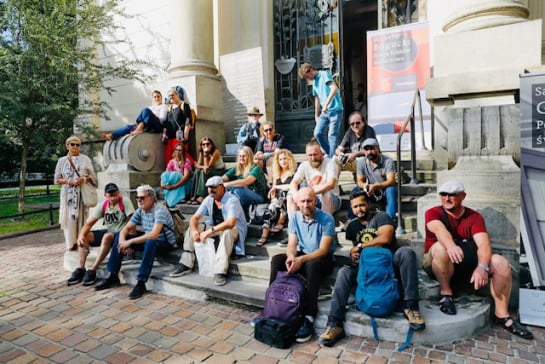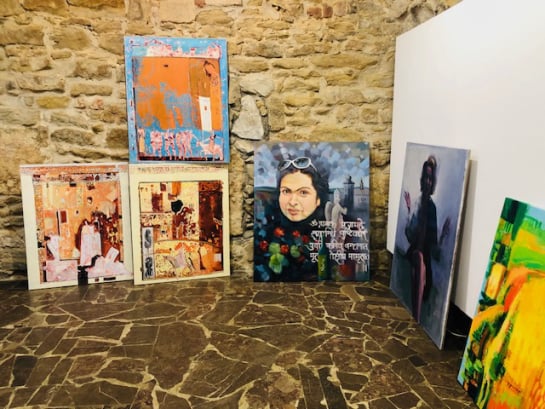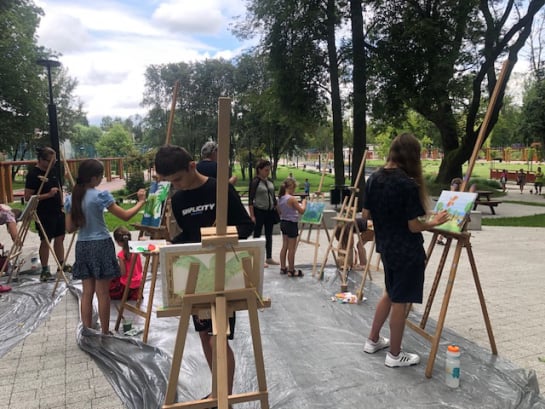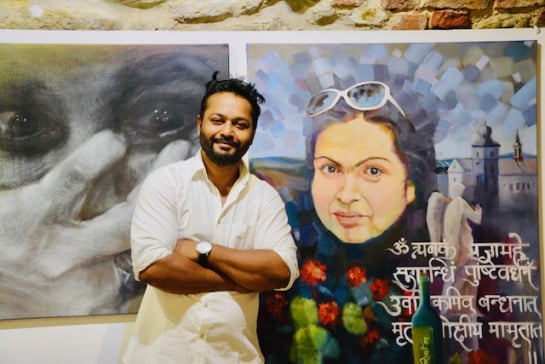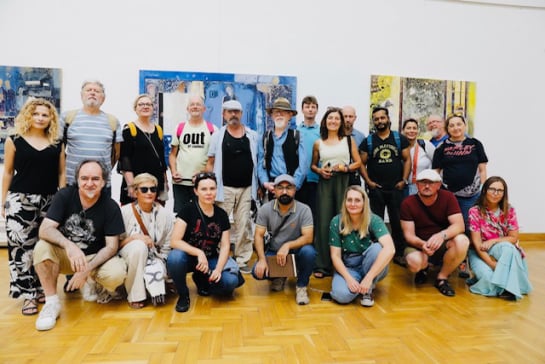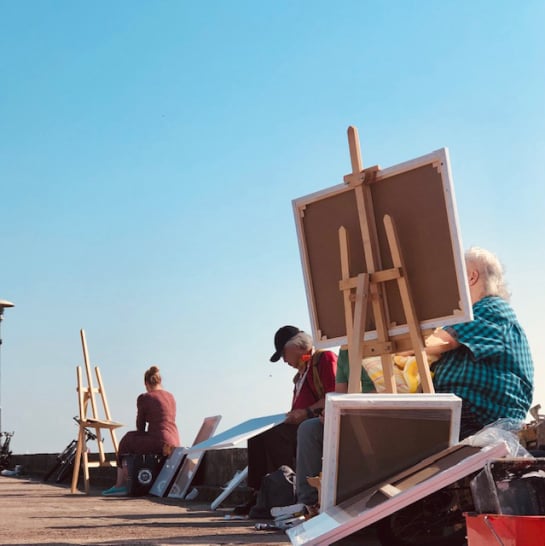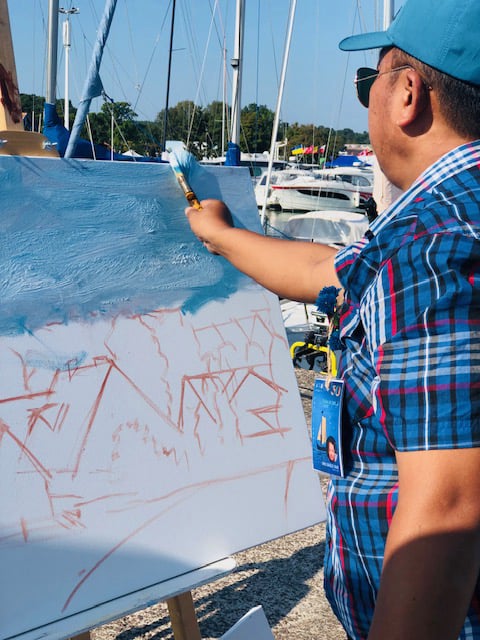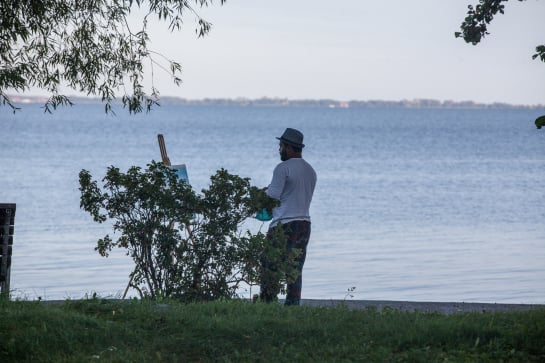Visuals
some images of the artists painting in a plein air


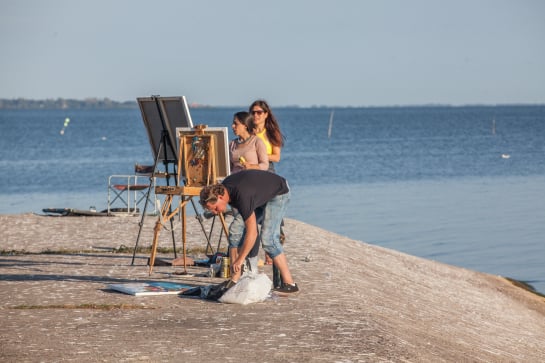
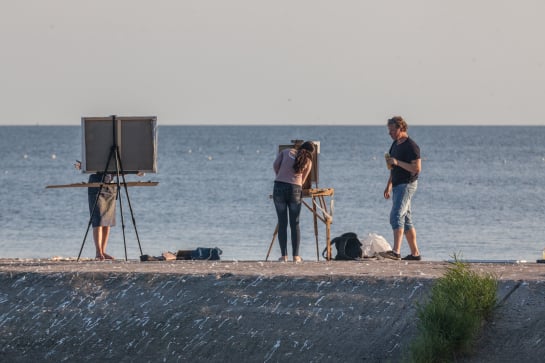
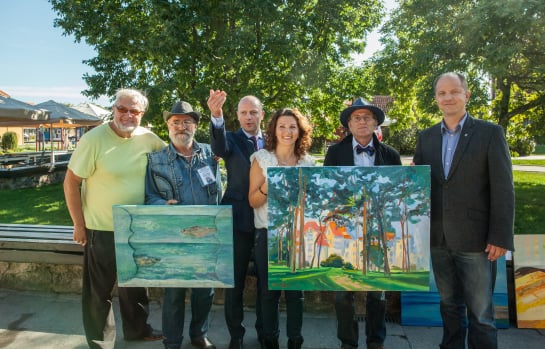


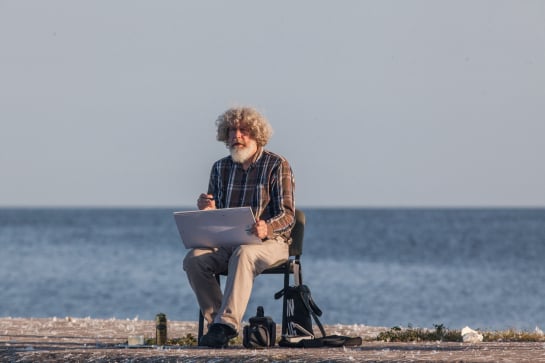
Plein air painting, derived from the French term "en plein air" meaning "in the open air," refers to the practice of painting outdoors, capturing the natural landscape and light in real-time. This approach allows artists to observe and interpret their surroundings directly, without the confines of a studio. Popularized by the Impressionist movement in the late 19th century, plein air painting emphasizes spontaneity, dynamic brushwork, and the influence of natural light on color and atmosphere.
A successful plein air artist needs strong drawing, composition, and color skills to capture changing light and landscapes. Quick decision-making and adaptability are crucial as weather shifts. Keen observation helps interpret scenes authentically, while problem-solving skills tackle outdoor challenges. Resilience and an open mindset foster creativity, allowing artists to experiment, refine techniques, and embrace spontaneity in dynamic outdoor settings.
Plein air painting is more than just an artistic technique—it is an enriching practice that refines observation, enhances skills, and fosters a deeper connection with both nature and cultural heritage. Whether in the bustling streets of Paris or the tranquil Himalayan mountains, plein air painting continues to be a vital practice that transcends borders. It serves as a powerful medium for cross-cultural exchange, allowing artists and viewers alike to appreciate diverse artistic expressions, traditions, and landscapes. By bringing together creatives from different backgrounds, plein air painting fosters mutual understanding, strengthens artistic collaborations, and promotes cultural diplomacy, offering endless inspiration and growth to nations and communities alike.
Plein air painting encourages artists to develop a keen eye for detail. Whether an artist is capturing the misty landscapes of the Himalayan mountains and the sacred waters of the Ganges, or the dense natural forests in himalaya, painting on-site hones their ability to perceive shifts in light, color, and perspective.
For European artists, plein air painting connects them with a rich tradition established by renowned masters like Claude Monet, Vincent van Gogh, and John Constable. In India, the practice aligns with the country’s deep artistic heritage, from Mughal miniature painters capturing nature in detail to modern artists exploring urban and rural landscapes. By painting outdoors, artists in both regions contribute to their cultural narratives and artistic evolution.
Since outdoor conditions change rapidly, plein air painting trains artists to work efficiently, make quick decisions, and simplify complex scenes. This is particularly valuable for artists in Europe, where weather variations demand adaptability. For Indian artists, this practice presents a new and exciting challenge, as traditional Indian art has been largely studio-based. Navigating the shifting light conditions of the Himalayan foothills, the misty Ganges ghats, or the dense forests requires a fresh approach to color mixing, brush techniques, and composition. This shift to painting directly from nature offers Indian artists a unique opportunity to break conventions and explore uncharted artistic expressions.
Engaging directly with nature fosters a deep appreciation for the environment. European artists may be inspired the culturally rich landscapes of Rishikesh, where Indian traditions, yoga, and Ayurveda blend harmoniously with the natural environment. In India, the variety extends from the Himalayan landscapes to the sacred waters of the Ganges and the lush forests surrounding Rishikesh. The region’s unique blend of spiritual energy and natural beauty provides an unparalleled plein air experience, where artists can capture the interplay of misty mountain light, flowing river reflections, and the serene atmosphere influenced by Ayurveda and yoga traditions. Plein air painting in such settings fosters mindfulness, artistic growth, and a profound connection to both nature and cultural heritage.
Plein air events, workshops, and festivals provide networking opportunities. Europe hosts prominent plein air gatherings, such as in Lithuania, Poland, Russia, Denmark, Romania, Italy etc. while India is witnessing a rise in outdoor painting retreats and competitions. These interactions offer artists a platform for cross-cultural exchange and collaboration.
Collectors and art enthusiasts often appreciate plein air paintings for their authenticity and spontaneity. European art markets value original, impressionistic depictions of landscapes, while Indian buyers are increasingly drawn to contemporary interpretations of traditional sceneries. Mastering plein air techniques helps artists carve a niche and appeal to both local and international markets.
Watching artists paint outdoors is a transformative experience that offers viewers a moment of respite from their daily stresses. The open landscapes of the Himalayas, the spiritual aura of the Ganges, and the tranquil environment of Rishikesh create an immersive setting where observers can witness creativity unfold in real-time. This process not only provides mental relaxation but also inspires a deeper appreciation for cultural narratives and the art of plein air painting, encouraging viewers to engage with artistic traditions and perhaps even explore their own creative pursuits.








